Rivka
Shohin
While clearly the exact name or cultivator will never be known on this old landscape plant, I would love to know all I can as I work on it. I'm also fascinated to know if there is any way to get a rough idea of age?
I believe this is an "evergreen" variety and clearly the leaves are naturally very small, even when the plant was left quite large. The hedge was easily 4 ft tall It was pulled by me from a neighbors yard last month. The pictures show the sheared hedge form it was in, albeit unkempt, before I trunk chopped it.
Flowers are small and fairly true red, it was about to bloom in April/Early May. I actually have two blossoms left intact just so I can see the bloom once before it goes out in the yard to back bud for a year, the picture of the bud in my hand for size reference was taken today April 27th, not sure if it has the strength to bloom after the massive repotting I put it through, but if it does I will update this thread with a picture.
Leaves are tiny, they have the hairs on them. It had been planted in fairly strong sun up against a west-facing brick wall of a house, so whatever it is, it's a tough old lady. The last picture is close up on the backside of a semi-dry leaf
Thanks, Rivka
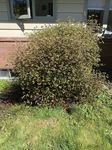
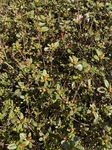
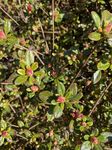

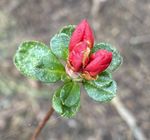
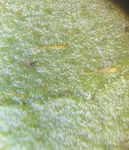
I believe this is an "evergreen" variety and clearly the leaves are naturally very small, even when the plant was left quite large. The hedge was easily 4 ft tall It was pulled by me from a neighbors yard last month. The pictures show the sheared hedge form it was in, albeit unkempt, before I trunk chopped it.
Flowers are small and fairly true red, it was about to bloom in April/Early May. I actually have two blossoms left intact just so I can see the bloom once before it goes out in the yard to back bud for a year, the picture of the bud in my hand for size reference was taken today April 27th, not sure if it has the strength to bloom after the massive repotting I put it through, but if it does I will update this thread with a picture.
Leaves are tiny, they have the hairs on them. It had been planted in fairly strong sun up against a west-facing brick wall of a house, so whatever it is, it's a tough old lady. The last picture is close up on the backside of a semi-dry leaf
Thanks, Rivka






Last edited:

